What is Wax Carving? with jeweller Clio Saskia
We recently explored the 6,000-year-old jewellery-making technique of wax carving with fine jeweller Clio Saskia, who employs this ancient process to create intricately detailed sculptures of exotic animals on a jewellery scale. In an interview with the Goldsmiths’ Centre, Clio describes how she discovered her aptitude for wax carving, the creative possibilities it presents and how her fellow makers might also become proficient in this versatile craft.
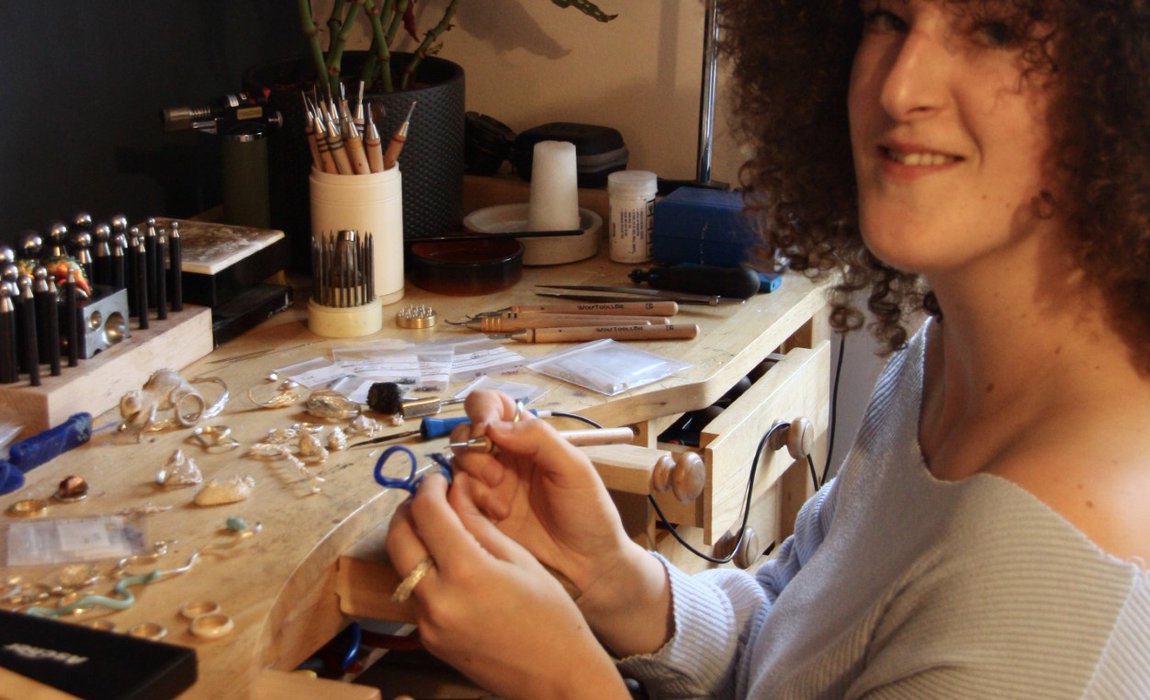
What is wax carving and how is it used in jewellery and silversmithing?
Wax carving is a really versatile technique that can be used within jewellery, sculpture, or any field involving 3D forms. The first recorded wax carving pieces are dated around 6,000 years old, so it has a long history in the industry. The reason makers use wax is because it’s really easy to shape, form and carve. You can remove material but also add to it, which means that if you make any mistakes, they’re easy to go back to and rectify. There are also many different kinds of wax, so you can use really hard waxes or soft waxes and combine them to create lots of different shapes, textures and finishes for precious metal jewellery.
To change your wax carving into a precious metal piece, you use the lost wax casting process. This process involves first making your wax piece, then coating it in a hard plaster that is called investment, or special sand and then melting out the wax in order to leave a negative impression of the piece. You’re then able to turn it upside down and pour the gold, silver or whatever metal you’re using into the negative space, creating a replica of your wax carving in metal. You can make as many replicas of that piece as you want.
What sparked your interest in wax carving?
I grew up in the Netherlands, and when I was 19, I decided to move to the UK to study sculpture. I went to Camberwell College at University of the Arts London, and for the first two years, I experimented, trying various techniques, both contemporary and traditional skills, and clay carving as well. During my second year, I figured out that I wanted to make replicas of some bigger pieces that I’d cast, and the course technician taught me how to do rubber mould making and the lost wax process. I instantly became obsessed with it - it was this amazing combination of historical techniques with contemporary materials and applications. I also discovered quite a big movement of people collecting leaves, flowers and seed heads and using the lost wax process to make hyper-realistic metal replicas of them. I spent my whole final year exploring the lost wax process, making replicas of Greek Venus busts and other smaller projects.
Historically, busts of this kind would be adorned with silver jewellery, so I started making jewellery for them, and found that I spent way more time focused on the jewellery that the actual sculpture. That made me think that perhaps jewellery was something I should pursue because as a jeweller you are pretty much a miniature sculptor, and for me that’s extra fun. I also love how what people wear defines their identities - you can tell a lot about someone by the clothes they choose to wear, and jewellery has this added perception of value, and historically, also status. I find it fascinating to consider why someone is wearing a particular piece of jewellery, what sort of person would like a certain piece, what would it make them feel, and as they moved through the world, how those things would change.

How did you learn the skill of wax carving and how could I start to learn the skill?
I started off making big sculptures, and then reduced that smaller and smaller until I was making really petite, detailed stuff. I'm a bit of a perfectionist, so I find that it works better for me to make smaller pieces. After I decided that jewellery was something I was genuinely interested in, I did a couple of short courses in silversmithing, and goldsmithing, and then decided that I wanted to make a career out of it. I did the level three Jewellery Manufacturing Course at the British Academy of Jewellery (BAJ) where I was taught a broad spectrum of metalworking techniques. It solidified for me that my real interest was carving in more natural, fluid forms and shapes, because whilst you can create amazing textures and finishes in metal, I find the actual forms are not particularly versatile for what I am trying to create. The BAJ course really helped me to focus on how I can make the ideas I have in my brain into something that works in metal.
If you want to start wax carving, it’s actually one of the cheapest ways to make jewellery. You can buy blocks of wax on Amazon or from jewellery trade shops very cheaply, and you can also buy a dentist’s steel toolkit for around £12 which has loads of different shaped tools, with rounded, thick or scooped tips. You can use these to carve out different forms and shapes, and to figure out how the material works and what you can do with it.
Everyone’s brain works a bit differently, but for my brain, looking at 3D forms in a block that I can add to and take away from, that just works. Maybe my brain is more naturally attuned to that kind of thing, but it’s also about taking the time to practice, practice, practice. If you want to re-create a shape, then I suggest sitting and having a close look at it, turning it upside down and around, trying to understand how the parts move into each other. The more you get used to 3D shapes and how they are constructed, the more you can understand how to make them.
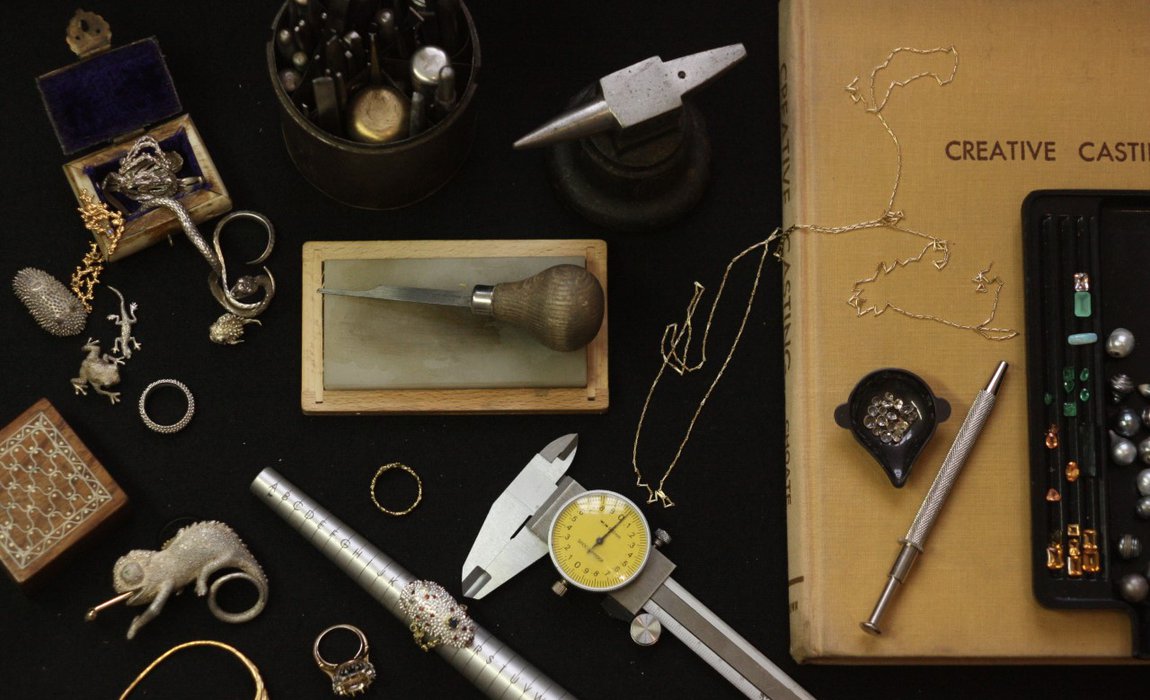
Where did you get the idea to use dentist tools?
I can't remember if it was advertised to me or if I was flicking through a book, but it occurred to me that they look like the really expensive tools you can buy for wax carving, except they were way cheaper, so I decided to get some and see what I could do with them. The great thing is that you can file them down, smooth them out, or use sandpaper to make really sharp edges or smoother edges. So you can tailor them to whatever you want to do.
So what does the average day as a wax carver look like?
First and foremost I run a jewellery making and designing business. So I probably sit down at the start of the day with a cup of tea and a little to-do list, and I try and organise the items on the list by what is most important or time sensitive, such as a project for a client who has a certain deadline. If I get those tasks finished in the morning, and if I don’t have anything urgent to do, I’ll pull out my massive folder of pictures and annotated ideas, which is full of weird, random stuff, and have a look through them. If I have an idea but I’m not quite sure yet how to realise it, I’ll put it in the folder, and come back to it in a few weeks or months, after I might see a wire fixture or hinge that would be perfect for it, or when I might be feeling more inspired or ready to approach it.
Running a business involves a lot of logistical and administrative stuff, like replying to emails, so my time on the bench is probably around two days each week. I try to make as much time for it as possible, as it’s my favourite part.
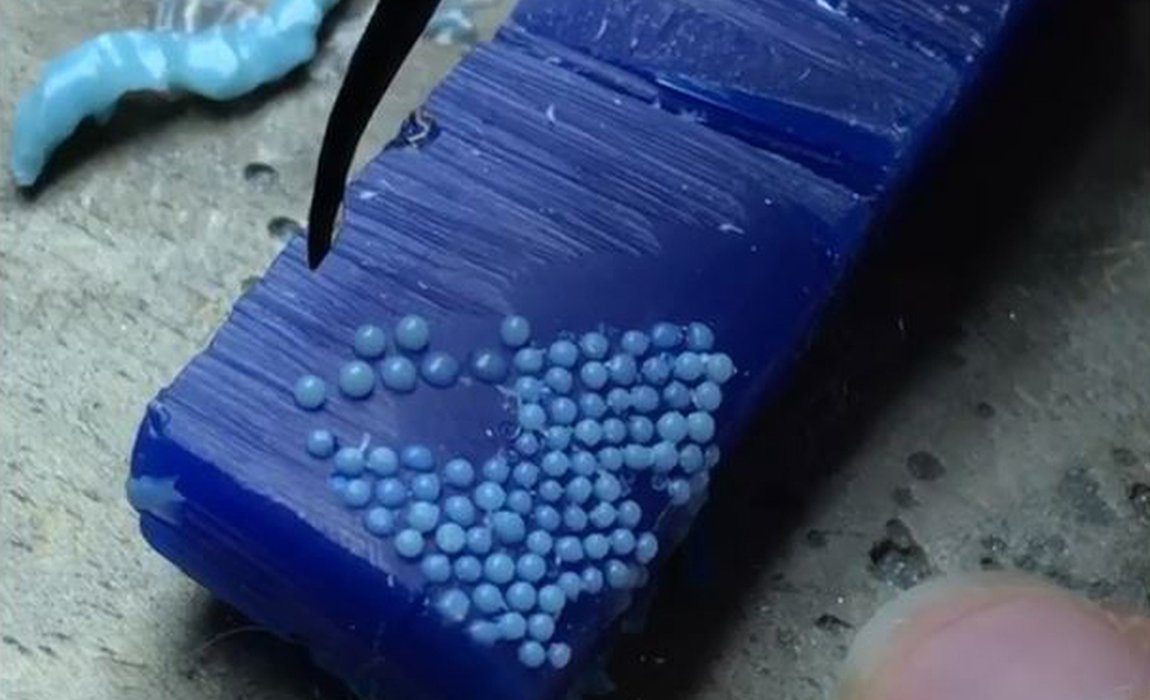
In many ways, is it a bit like the analogue or manual equivalent of CAD?
Yes! So I did a CAD course, and it really helped and changed the way that I looked at wax carving, because the way that you build shapes through CAD is not dissimilar to how you build in metal or wax. It’s just another way of looking at making forms that can really open your eyes to what’s possible. I think that the more skills and strings you can add to your bow, and the more ways of looking at the world you have, the more you’re able to achieve weird, wonderful, cool, exciting, and different things in jewellery making. Everyone wants to make something that’s a bit original, a bit unique, so use the new and progressive techniques alongside the traditional ones.
How many years do you need to train and practice to become an excellent wax carver?
Excellent is in the eye of the beholder. If you're making stuff that you love, then that's excellent. As I said, people’s brains work differently. Some people will pick up the skill in a couple of weeks, and be able to make pretty advanced stuff early on, and for other people, it will probably take a bit longer. That’s totally fine, as long as you’re having a good time, and overall I would say it’s not a difficult skill to learn. People say that it takes 10,000 hours to learn a new skill, but I’m nowhere near that - I’m maybe halfway there - and yet I’m pretty confident in my skills and am able to make what I want to. I do a lot of research, and watch a lot of YouTube tutorials, and I’ll often try what I’ve seen the very next day. Some things work and some don’t, but approach everything with creativity, figure out your own way of doing things and if something goes wrong, that’s okay. Look at why it went wrong, and how to prevent it from going wrong next time. I’ve broken so many pieces, potentially a hundred pieces, but it’s not the end of the world - just learn from it.
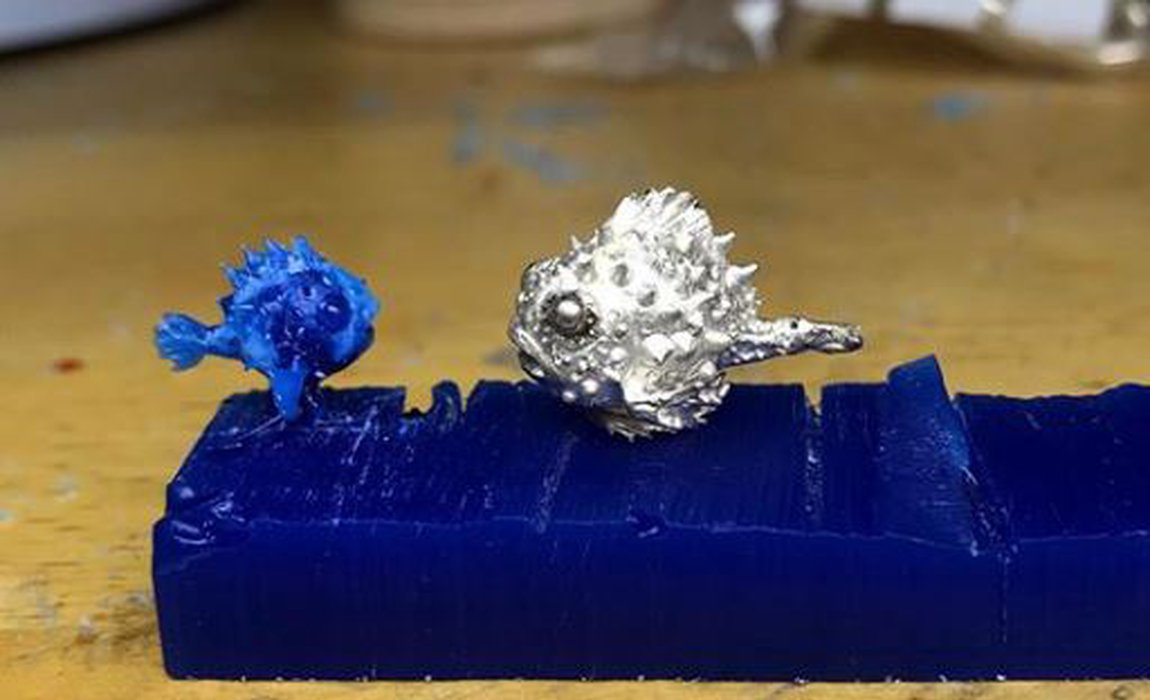
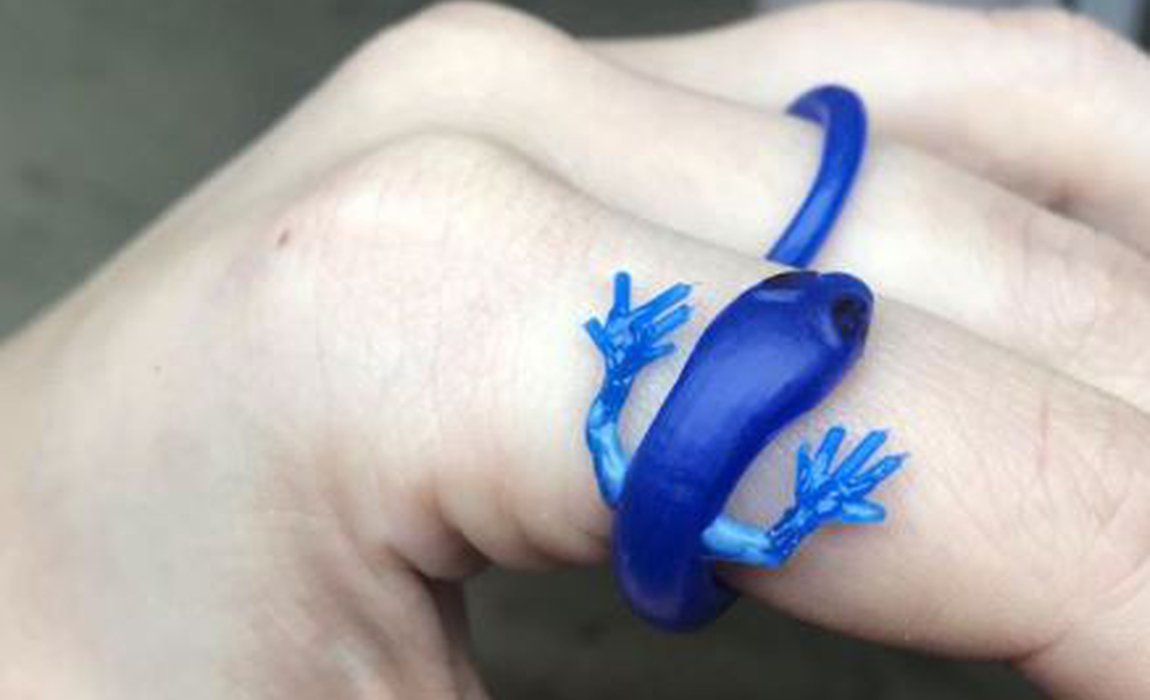
Do different colours of wax mean different things?
If you're working with a casters, like in Hatton Garden, where there are a lot of different casting houses which have wax injectors that push the wax into moulds in order to make replicas, and for this application the wax needs to have certain qualities. It needs to be flexible but relatively hard. Often they mix lots of different scraps together to reduce waste, so sometimes it might be blue, green or red because the mixture of offcuts creates lots of different colours.
If you’re buying fresh blocks of wax, you can buy ring-shaped blocks that already have a hole cut in that you can carve around, and you can also buy lots of different colours of wax that have different properties. The blue is kind of a general, all-purpose wax, good for everything, quite hard, quite carvable, and you can polish it up quite well. Green is harder and therefore more brittle, but you can create precise, crisp edges. Pink is super soft so that you can warm it up in your hands and shape, fold and wrap it around things. So there’s lots of options, and you can choose the appropriate type depending on what you’re going to use it for.
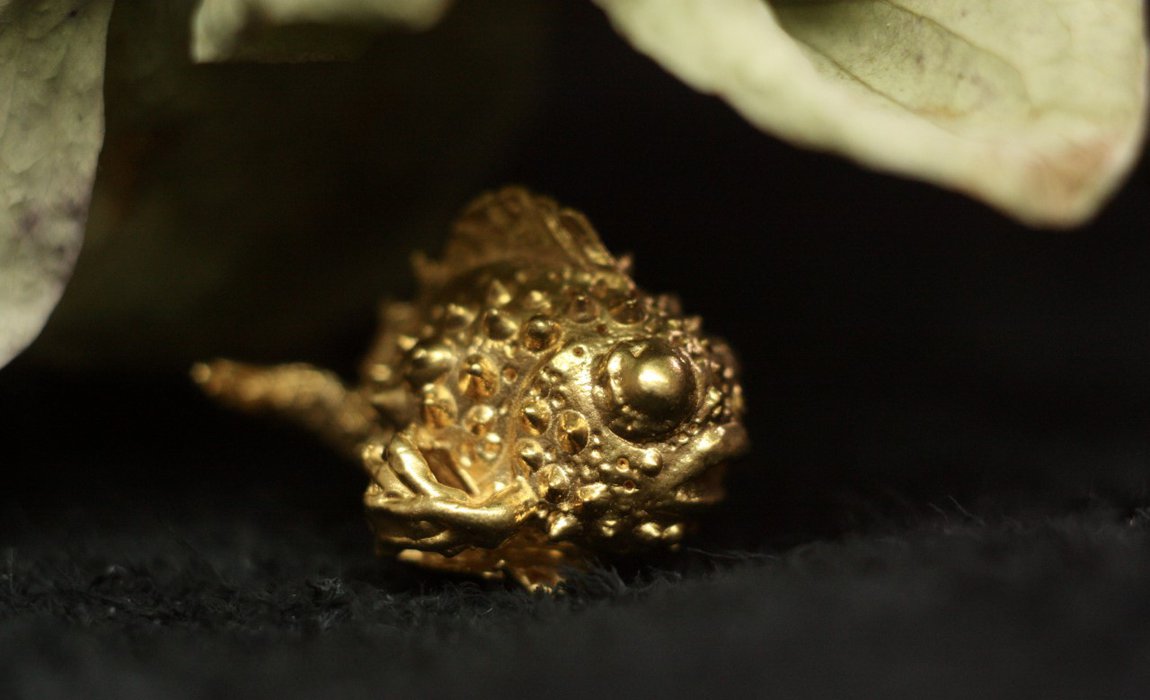
What is your favourite piece that you've ever made?
It's really difficult for me to decide - it’s usually either the piece I’ve just made, or the piece I’m about to make! There’s one piece at the moment that I’m fond of, a tiny fish called George. He’s a Pacific Spiny Lump Sucker, and I was thinking about making him for ages. Because he’s so small and detailed and involves a lot of weird textures, I was a bit intimidated, and thought I’d probably not be able to make him as realistically as I wanted. Then one day I felt inspired and just sat down and did it, and it only took about three hours. So it’s really about trusting your own skills. I just find George adorable, characterful and lovely - people seem to really like him and he is worn as a lapel pin, which means he can go on little adventures with you.
So, what is the most curious piece you've been asked to make or decided to design?
Probably a chameleon ring that I created whilst I was doing the Jewellery Manufacturing Course at the BAJ. We were given a brief by Baroque Jewellery to make a kinetic ring, so when you stroke the chameleon’s back, its tongue goes in and out. There’s also a lovely little sapphire in there and some emerald eyes, and the entire skin texture is created by hand with a steel tool. The chameleon sits on your hand with its tail curled around your finger - I just imagined that that’s how a chameleon might sit on your hand, and I felt compelled to make it.
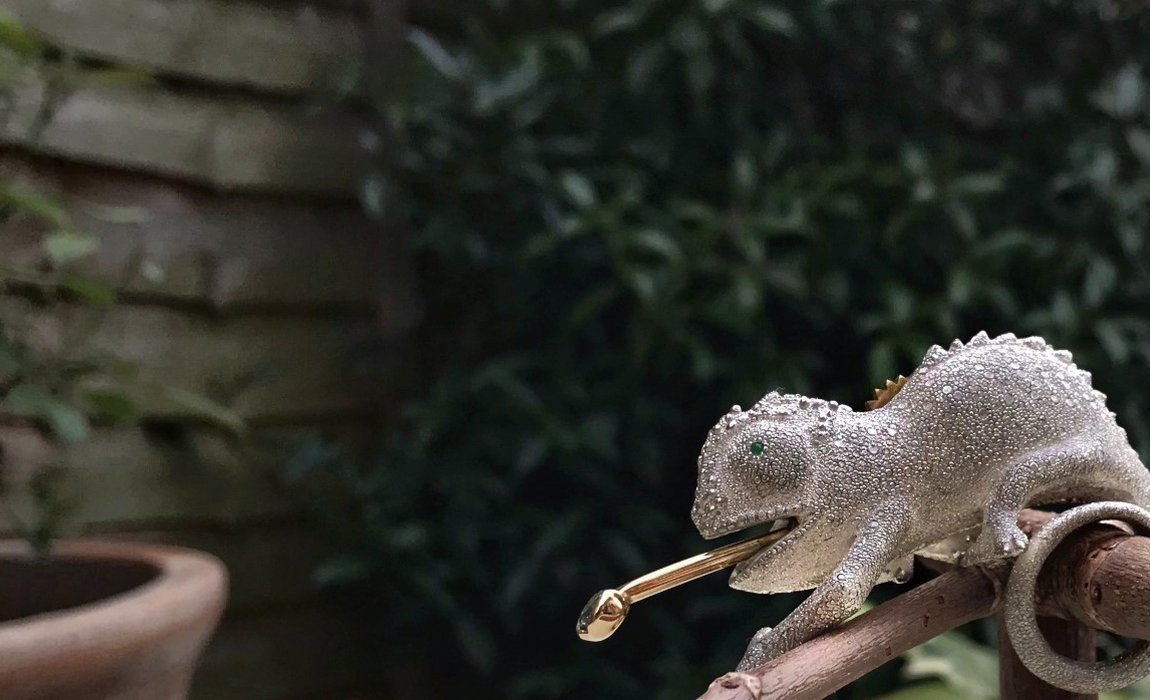
How big is your collection of wax carvings?
Failed pieces - hundreds! Loads of them are from where I’ve been trying out textures or trying to carve away things, and I tend to keep a lot of them as it enables me to cycle back if say, I want to look at a texture I tried out a few years ago that might be good for a new piece I’m making. If I’ve made a piece of wax and finished it however, I tend to cast it in a base metal like brass, bronze or even silver, as it is not that expensive, because wax is really vulnerable to being broken. So, for the pieces I’m really happy with, I tend to make moulds, which means that even if I lose the ‘master’ - the original piece - I can make a replica of it. I’ve probably got around 40 moulds in total, but I haven’t been making for that long and I have only had my own business for around a year and a half, so I’m sure that will increase dramatically over the next few years.
Learn more about the careers that make up the jewellery, silversmithing and allied industries. Click below to read our Industry Profiles.